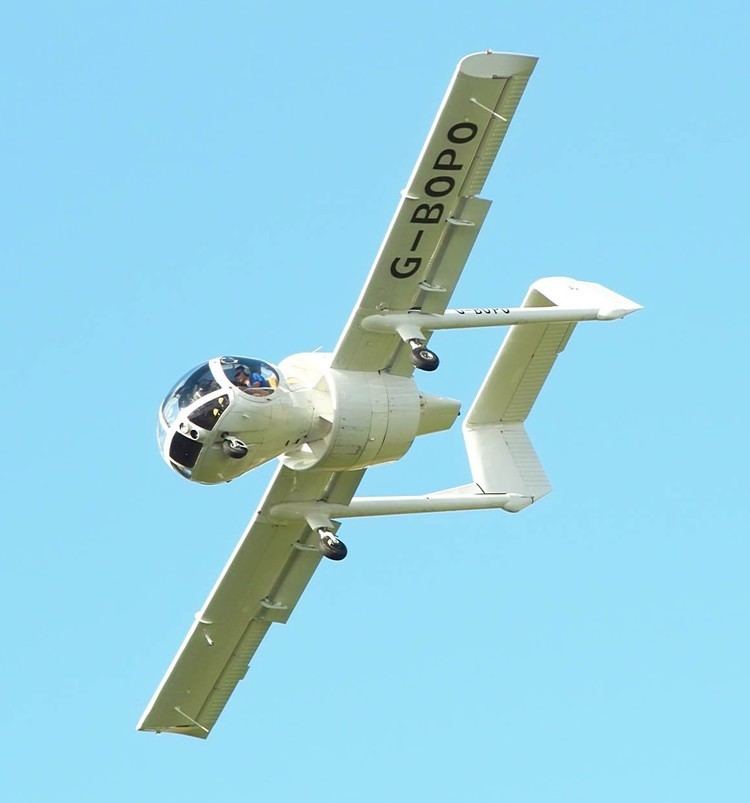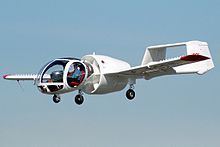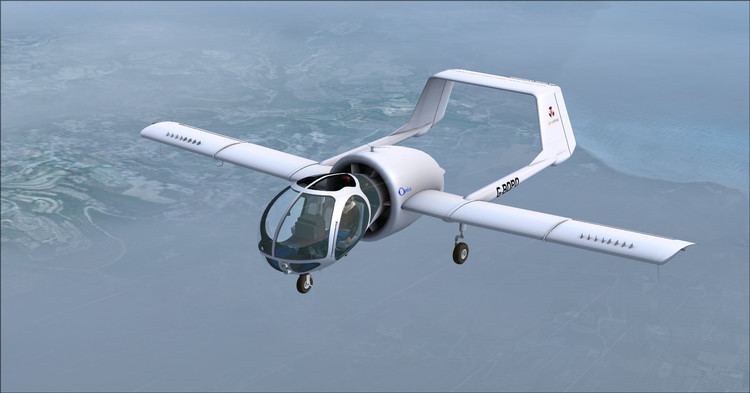Top speed 213 km/h Length 8.15 m | Wingspan 12 m | |
 | ||
The Edgley EA-7 Optica is a British light aircraft designed for low-speed observation work, and intended as a low-cost alternative to helicopters. The Optica has a loiter speed of 130 km/h (70 kn; 81 mph) and a stall speed of 108 km/h (58 kn; 67 mph).
Contents
- Edgley optica fsx freeware hd
- Design and development
- Operational history
- Accidents and incidents
- Specifications
- References

Edgley optica fsx freeware hd
Design and development

The Optica project began in 1974 with a company, Edgley Aircraft Limited, formed by John Edgley who, with a small team, designed and built the original prototype. In 1982, institutional investors bought into the project and set up a production line at Old Sarum Airfield in Wiltshire. Over the next three years, the company was built up to full manufacturing capability, the aircraft received UK certification, and the first customer aircraft was delivered. Despite this success, the additional investment necessary for the final phase of full production was not forthcoming, the business went into receivership, and John Edgley was forced out. With new owners aircraft on the production line were completed, and the Optica entered service.

The aircraft has an unusual configuration with a fully glazed forward cabin, reminiscent of an Alouette helicopter, that provides 270° panoramic vision and almost vertical downward vision for the pilot and two passengers. The aircraft has twin booms with twin rudders and a high-mounted tailplane. It is powered by a Lycoming flat-six normally-aspirated engine situated behind the cabin and driving a fixed pitch ducted fan. Due to the ducted fan, the aircraft is exceptionally quiet. The aircraft has a fixed tricycle undercarriage with the nosewheel offset to the left. The wings are unswept and untapered. The aircraft is of fairly standard all-metal construction with stressed skin of aluminium.
The aircraft's distinctive appearance has led to it being known as the "bug-eye" in some popular reports.
Operational history

The Optica, powered by a 160 hp (119 kW) Lycoming IO-320 engine, made its maiden flight on 14 December 1979 when it was flown by Squadron Leader Angus McVitie, the chief pilot of the Cranfield College of Aeronautics.
The Optica, upgraded to the more powerful Lycoming IO-540, entered production in 1983. Edgley Aircraft Limited obtained its initial Civil Aviation Authority certification on 8 February 1985.
A total of 22 Opticas have been manufactured, and construction of a twenty-third began but was not completed. Ten aircraft were destroyed in a fire at the factory.
The Optica went through several changes of ownership, until FLS Aerospace (Lovaux Ltd) took over the rights, together with the design and manufacturing rights to the Sprint: a two-seat ab-initio trainer that had been designed by Sydney Holloway in Cornwall UK at about the same time as the Optica. Lovaux had intended to develop both aircraft, with the Sprint intended as the military trainer for the UK forces. Unfortunately, the Sprint was not adopted for this role, and Lovaux cancelled both projects.
The Optica and the Sprint together then passed through other owners until, in 2007, they were offered to John Edgley who formed a new company, AeroElvira Limited, with three former employees of Edgley Aircraft (Chris Burleigh, Fin Colson and Dave Lee) who at that time were working on both projects for the then-owners. The new company successfully put G-BOPO back into service as a UK demonstrator, with a first return-to-service flight on 3 June 2008. In August 2016 Interflight Global plans to start a valuation of the dormant Optica programme with a view to relaunching production.
Accidents and incidents
On 15 May 1985, Optica G-KATY crashed, killing its Hampshire Constabulary pilot and his photographer passenger. The UK Department of Transport Air Accidents Investigation Branch found, inter alia, that: "There was no indication that either structural or mechanical failure had occurred or of flying control malfunction or jamming." and that "The final loss of control was caused by either the aircraft stalling in a turn at a high angle of bank, or the nose dropping or inadvertant [sic] interference with the controls by the photographer alarmed by his apparent insecurity."
On 11 March 1990, G-BMPL, while in flight, sustained damage to the ducted fan and hub assembly and minor airframe damage. The pilot performed a successful forced approach landing: there were no injuries and no further damage to the aircraft. A subsequent investigation discovered cracks resulting from metal fatigue on the fan hub. The manufacturer issued a service bulletin calling for a hub inspection before further flight, and the UK Civil Aviation Authority issued a Mandatory Airworthiness Notice (No. 004-05-90). The Optica fan has now been replaced by one designed and manufactured by Hoffmann Propeller.
Specifications
Data from Jane's All the World's Aircraft, 1988–1989
General characteristics
Performance
Avionics
1 × IR/Camera Turret in recessed bay in nose. 1 x Skyshout Loudspeaker (Police Equipment)
